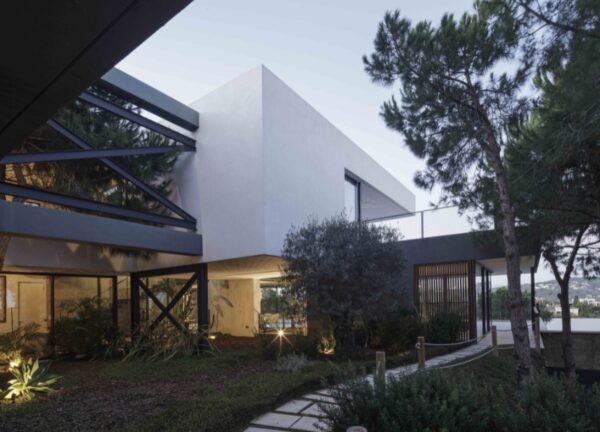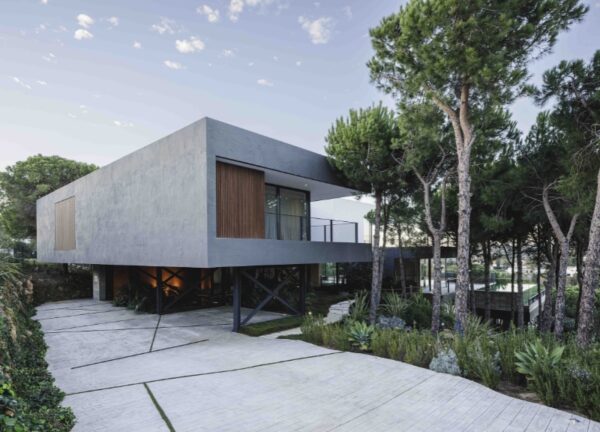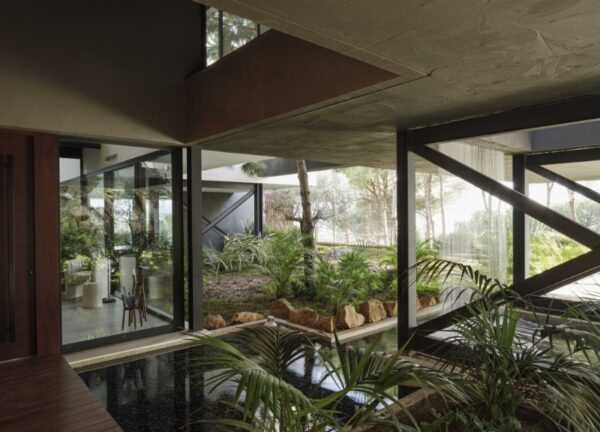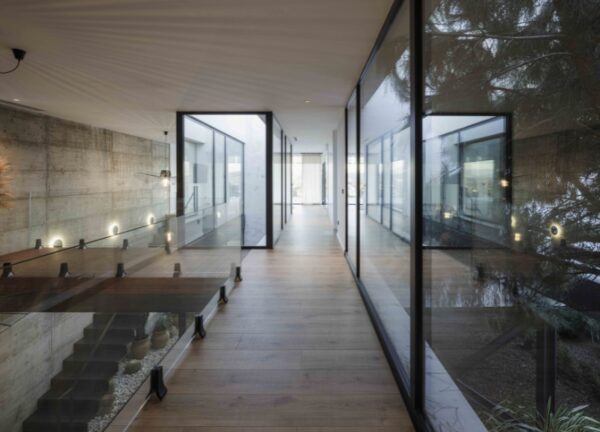
Villa Grazalema: Crafting a Home Suspended in Nature

Flow 81 Architecture Lab. SLP, under the leadership of Ignacio Merino Rivero, has transformed a steep, pine-forested site in Sotogrande, Cádiz, into the award-winning Villa Grazalema. Recognized in the Architectural Design category by the Architecture MasterPrize, this “flying” house weaves through 133 existing pines on a 26 % slope, offering panoramic mountain and sea views. We spoke with Ignacio about his unconventional path into architecture, the challenge of building within the forest canopy, and the poetic strategy behind his design.

How did a biology-bound student become the founder of Flow 81 Architecture Lab?
Ignacio Merino Rivero: I grew up wanting to study biology until a trip opened my eyes: everything around me was designed. I realized I needed to understand how design works, so I chose architecture. Starting from zero—doing small apartment renovations—we trusted our skills, built a team, and within ten years grew to fifteen passionate professionals.
What was the core challenge you faced with Villa Grazalema’s steep, pine-dotted plot?
Ignacio Merino Rivero: Rather than clear the 133 pines or regrade the 26 % slope, our brief was to embrace the existing nature. We needed to find views and create a comfortable home on what many saw as an inhospitable site. That led us to conceptually “fly” the house among the trees, preserving every pine and leveraging the slope for dramatic vistas.


Can you describe how you translated that “flying house” concept into built form?
Ignacio Merino Rivero: We stepped the structure across the slope, cantilevering over the forest floor so the canopy envelops the home. Generous voids—atriums and patios—puncture the floorplate around tree trunks, providing daylight, natural ventilation, and visual continuity with the pines. The main volume rotates slightly off the north-facing slope, optimizing solar orientation and positioning the pool to avoid self-shadowing.
What technical and environmental hurdles did you overcome during construction?
Ignacio Merino Rivero: Site water saturation required specialized foundations to partially dewater the ground before building. Maintaining a three-meter buffer around each tree challenged our layout and structural grid. We meticulously detailed the interface between slab, tree, and earth to protect root zones while achieving a light, elevated footprint.

Which innovative detail best captures Villa Grazalema’s spirit?
Ignacio Merino Rivero: The perforated floor slabs—where tree trunks emerge through the living spaces—are both functional and symbolic. These “holes” act as ventilation shafts, green atriums, and visual connectors to the forest. They embody our commitment to letting nature flow through the architecture rather than standing apart from it.

What outcome of this project brings you the greatest satisfaction?
Ignacio Merino Rivero: Seeing the family live and play among the pines, with children still free to roam the ground level, is immensely rewarding. The home truly flies above the earth, capturing sea and mountain panoramas, while preserving the forest below. Their joy confirms that our design succeeded in both preserving nature and creating a comfortable, memorable home.
Reflecting on your path, what moment steered you toward architecture?
Ignacio Merino Rivero: On that fateful bus trip, I looked at my hands and then the world around me, realizing every object and landscape held a design story. That moment—I wanted to learn that language—shifted my trajectory from biology to architecture.
Which historic projects continue to inspire your work?
Ignacio Merino Rivero: The cliff-carved town of Delphi in Greece fascinates me for its seamless integration into rugged terrain, using stone and slope as both canvas and material. Back in Rome, the Pantheon’s 8 m oculus atop its ancient concrete dome reminds me that architects can leave us structures that endure for millennia.
If you could own any design object in history, what would it be and why?
Ignacio Merino Rivero: The first tent ever crafted—a portable architecture born from the human need for shelter. To me, that invention marks the genesis of design: turning raw material into protective form.
How do future trends like AI influence architects today?
Ignacio Merino Rivero: AI can accelerate design exploration, but it also risks displacing our expertise. We must use it wisely, preserving the irreplaceable human insight that shapes empathetic, site-responsive architecture—designs that honor both client and context.
In your view, how can architecture elevate society?
Ignacio Merino Rivero: We live within scales—from continents to tiny homes—and architecture frames every experience. By reflecting the human spirit—our best values—through form, scale, and material, we craft environments that nurture comfort, community, and well-being.
What does winning the Architecture MasterPrize mean for Flow 81 Architecture Lab?
Ignacio Merino Rivero: This honor validates our belief in daring design that collaborates with nature instead of conquering it. It inspires us to keep pushing boundaries, to trust our vision, and to share these lessons on how architecture can truly “fly” within its environment.

We thank Ignacio Merino Rivero for guiding us through the remarkable journey of Villa Grazalema—an elevated home where forest and family intertwine.
